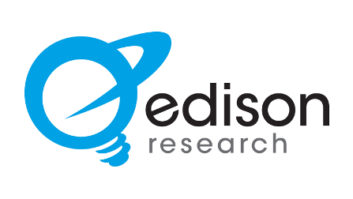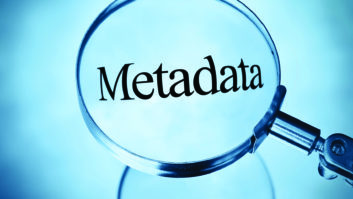Radio World asked me to drive around the Finger Lakes area to report on my HD Radio experiences and to compare station lists on the HD Radio Web site — www.hdradio.com/find_an_hd_digital_radio_station.php — with what I heard. The goal: to gather an overall impression of the area’s HD Radio and learn what a consumer who starts fresh, with a radio and this Web site list, might encounter.
My results are seen on page 12 in chart form.
The Finger Lakes is the region between central and western New York State, bordered and including Rochester to the west, Syracuse to the east and Ithaca to the south. My town, Geneva, is roughly in the center among these cities.
I made my first test run on March 1 and repeated the test two weeks later from slightly different locations. I drove a 2001 Honda Accord with the stock antenna and an aftermarket JVC KD-HDW10 in-dash HD Radio tuner.

The author in the test vehicle, a 2001 Honda Accord. HD Radio in this area generally sounds good and stations are easily found. I discovered that the Web list, which is supposed to help consumers, generally seems accurate. But I was mildly disappointed that multicast formats weren’t more inspired, and frustrated with what appears to be a lack of care to certain technical aspects.
Surprisingly, there were more changes than I expected between the first and second run. The chart indicates notable changes during the second run on March 15.
Notes
The Web site lists two HD Radio-equipped facilities in Ithaca, 18 in Rochester and 11 in Syracuse.
The list puts WDWN-HD in Auburn but it’s really a Syracuse-market station so I included it in the chart. Also, the site lists WVOR, WCRR and WEOS as being Rochester stations. None of them really are; you cannot receive any in HD in Rochester, although admittedly all three are closer to Rochester than to any other city. Stations provide iBiquity with the market information that appears on the list.
Since my drives, WCRR on the Rochester list has changed calls to WROO; it keeps the country format on the main 107.3 frequency but changes from a rock format to mainstream country on its HD2 channel.
The Rochester list mentions “WLGZ(AM).” The station has changed call letters to WDCX. Further, the listed simulcast of AM on WLGZ(FM)’s HD2 in Rochester is not complete, as during my second run the HD2 and the AM had different programming.
Finally, the Rochester list indicates WCMF-HD2’s format is the “Brother Wease Music Show.” Wease is a popular morning host who was on WCMF(FM) for many years, but in 2008 moved to WFXF so I find it unlikely he has anything to do with WCMF anymore.
In Syracuse, WCNY(FM) was not listed as having an HD3 channel; I found that it does.
Findings
Overall the market has pretty good HD Radio coverage. Listeners will find several stations offering it. Many offer formats on HD multicast channels not found on regular analog radio, too.
The iBiquity Web list is reasonably accurate, although some stations aren’t easily categorized and formats are notoriously pliable. So the list isn’t perfect, but it’s pretty good for your average radio listener.
On the flip side, I was mildly disappointed with the lack of care with which many stations appear to treat their HD-R.
Six stations had misaligned analog time delay or no delay at all. Some were indicated as multicasting but weren’t when I listened. One AM had no HD Radio when I made my first run but was back up two weeks later.
Another FM had a serious problem with HD Radio; my radio flashed the “HD” light but could not lock, even when less than a mile from the transmitter. Two had exporters set up incorrectly to force receivers to “Hold” on digital. And one HD2 channel had a serious programming problem; the CD feeding it was skipping, for at least an hour. Ugh.
Audio quality also was a mixed bag. The AM station that returned to digital broadcasting in time for my second pass had fabulous-sounding HD Radio audio. However, Rochester’s other two AM stations sounded “crunchy” and sibilant.
The “main channel” HD1 on most FM stations sounds fine. Some FM HD multicast channels sounded fine, too, but others sounded like bad Webcasts.
The quality control for Program Service Data (a.k.a. Program Associated Data/PAD, or just “artist / title”) also was decidedly mixed.
Eighteen channels — counting HD1 and multicasts as separate channels — had well-synchronized PAD to their music. Three had PAD stuck on the wrong song and none had completely fixed it by the second test run. Eleven stations had just a text loop, and 17 had no PAD at all.
Formats
There weren’t any major format changes that I noticed in the two weeks between test runs. The only noticeable change was that WLGZ(FM) HD2 wasn’t simulcasting WDCX(AM) anymore; but it’s entirely possible that the simulcast wasn’t 100 percent of the time to begin with.
On a related note, only two outlets had HD3 multicast channels; both were public radio outlets. Unfortunately, neither had allocated much bandwidth to the HD3 channel, judging by the “bad Webcast” sound.
In terms of content, unless it was a simulcast of another station, all of the multicast channels seemed to be fully automated. Most, in my judgment, were variants of formats found on any non-HD Radio station across the country.
Some AM stations (WXXI, WDCX) were using HD2 on co-owned FMs to overcome day/night signal issues, a solid if unadventurous choice. Similarly, most public radio outlets were using HD2 or HD3 to offer more news/talk programs in some manner. In my view, only WWHT-HD2’s Spanish format and WBEE-HD2’s all-comedy format were real departures from the norm.
Signal
Most of the stations in the Finger Lakes transmit from fairly tall towers on top of major hills. This tends to make for excellent HD Radio coverage; and with one exception, I was able to receive digital signals noticeably outside of the protected service contour.
The holdout was WDVI during my second run, which apparently was having problems transmitting HD Radio at all that day.
(click thumbnail)
For my drive-around, I used a list from HDRadio.com, which shows stations believed to be on the air in all of New York state. I studied stations listed in the Rochester, Ithaca and Syracuse markets. The chart shows what I found. (HDRadio.com’s list is maintained by iBiquity based on information gathered from stations; the company also has listening stations in several markets to check broadcast quality and says information is checked regularly. It invites updates to its channel lists to [email protected].) It’s worth pointing out that I was able to receive all the Ithaca stations, and most of Syracuse’s, while in Geneva … a town nearly 40 to 50 miles away from both. However, it’s quite hilly in Ithaca proper, and while in that region I have noticed that HD signals do drop out about where one would expect. But overall it’s pretty good.
However, virtually every station would have short dropouts (less than 5 seconds) on its multicast channels when listened to for more than 15 or 20 minutes. Given the apparent universality, though, I suspect this might be a problem with my receiver instead of the stations themselves.
The AM stations all had noticeably reduced range after dark, but if you were within the 1 mV/m service contour, it worked well enough.
Also worth noting: local to Rochester is one of the biggest detractors of HD Radio, WYSL(AM) at 1040 kHz. Owner Bob Savage has complained extensively of HD Radio interference from WBZ(AM) in Boston operating on 1030 kHz, even during the daytime. I can’t speak too much to Bob’s specific case or in regards to HD-induced interference in general.
Certainly the AM band is a mess of static and hash in the Finger Lakes, especially after dark. But HD alone cannot be blamed for that, I think; there are known instances of AM stations staying on daytime patterns and powers after sunset, there’s a lot of noise coming across Lake Ontario from Canada that is allowed but still clutters the band, and the AM band just gets a lot of interference in general from electronics and whatnot.
I have not personally observed significant interference inside a given station’s service contour that was obviously attributable to HD Radio. But the AM band is so noisy already, and the FM band, especially the NCE portion, is so cluttered with stations, it’d be hard to tell.
Further worth noting is that Geneva is home to the first FM translator that broadcasts in HD Radio: W212BA, which is WEOS, the station where I am general manager. Its reach is limited solely to Geneva, which is 50 miles from the Rochester market. It’s not in the iBiquity list yet, but it’s also brand-new as of November 2008.
W212BA did seem to cause some difficulty in receiving WEOS in Geneva proper, but W212BA covered that same area well enough.
And in a related translator note, Ithaca’s WYXL-HD2 is apparently being simulcast on W277BS, also in Ithaca, based on the programming I heard.
In sum
Unfortunately HD Radio barely registers a blip in retail outlets in the Finger Lakes. Most stores don’t carry any receivers at all. The few that do, like RadioShack and Best Buy, often “hide” them in a distant corner and don’t hook up the antenna to the display unit.
Anecdotally I have heard that the public radio outlets do have some loyal fans of their HD Radio multicast offerings, but that’s mostly it. Beyond specific cases like that, and given the overall lack of originality in the formats, I fear there is little compelling reason for a listener to invest the $100+ for an HD Radio in our area.
Aaron Read is general manager of WEOS(FM), Public Radio for the Finger Lakes from Hobart & William Smith Colleges.
Wish to do a drive-around in your market? Write to[email protected].













